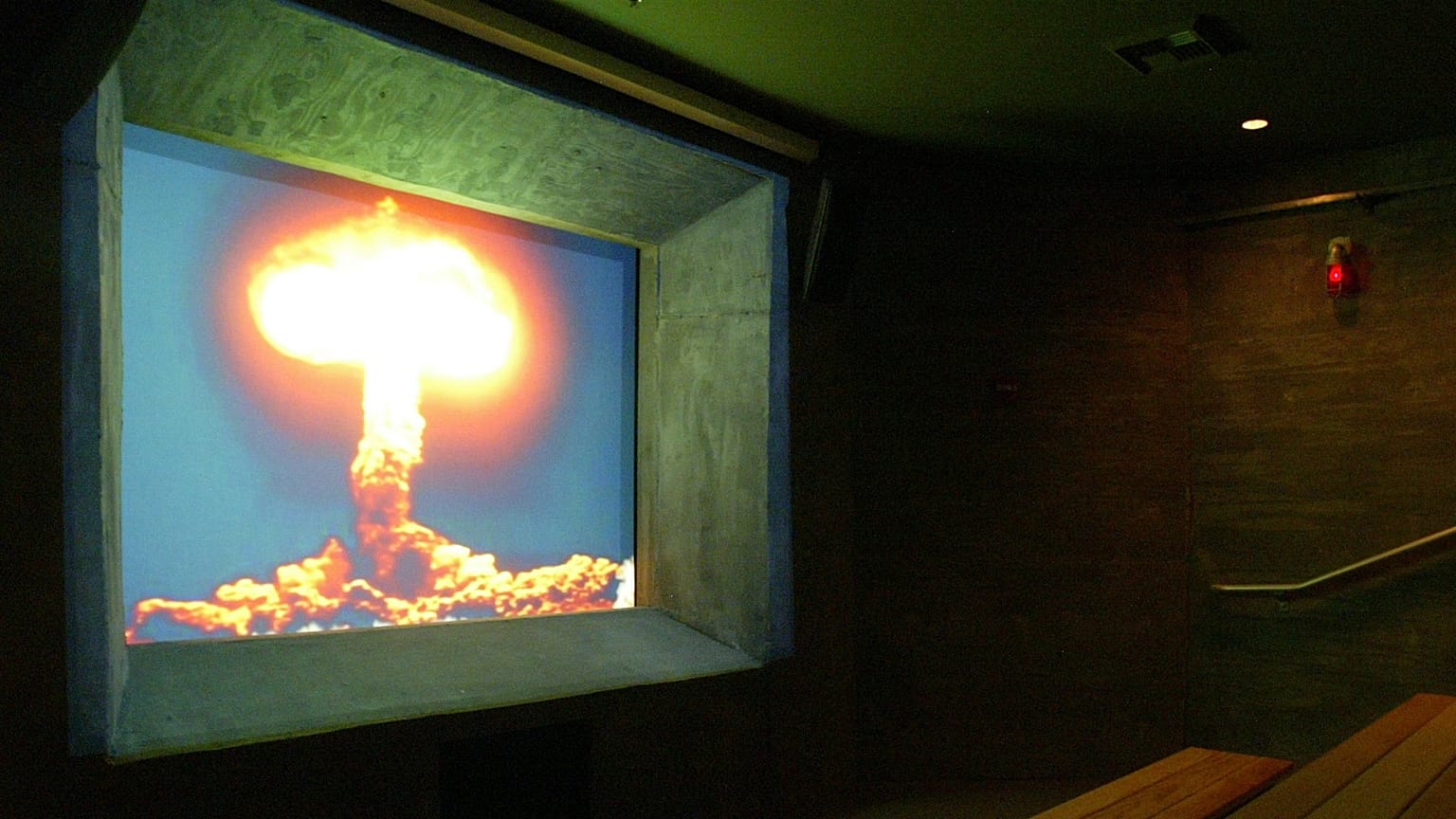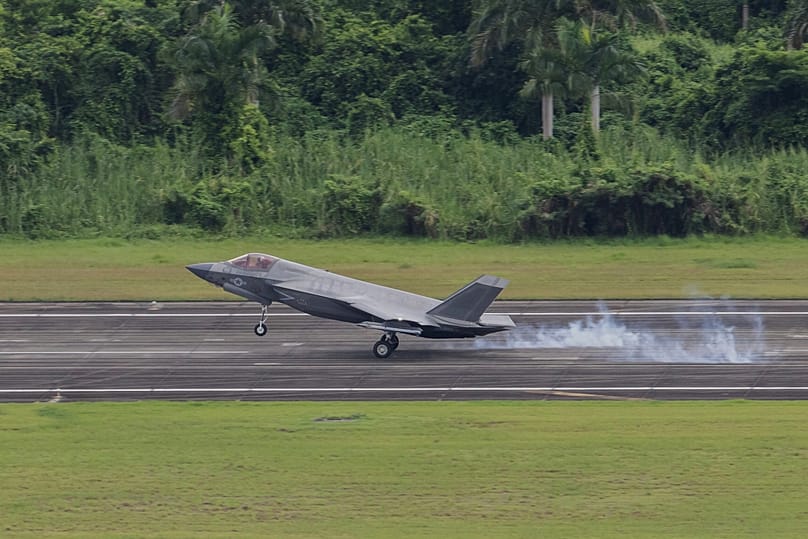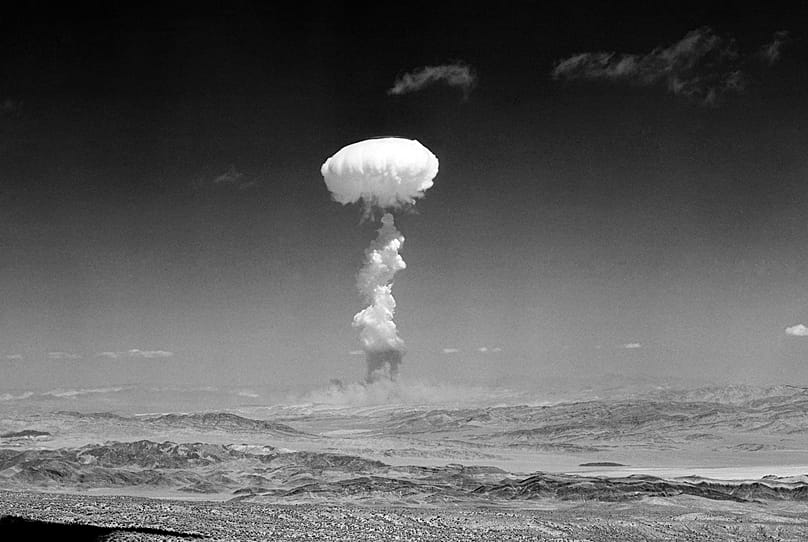Around 20 US nuclear weapons are stored in Germany, modernised and ready for use. But experts warn that the nuclear deterrent is no guarantee. Could the weapons soon be moved to the Baltic states?
The Bundeswehr is celebrating its 70th anniversary in Berlin, but not without tension. Germany's security is under pressure, and part of the stability is ensured by US nuclear weapons on European soil.
Around 20 of them are stored in Germany: free-falling bombs that could be dropped by fighter jets such as the Eurofighter. Their destructive power is devastating. They have only recently been modernised.
The weapons are part of the United States' nuclear security pledge. The US holds its nuclear hand protectively over its European allies. However, in light of growing doubts about US President Donald Trump's reliability towards NATO, there is growing concern in Europe that Washington could hesitate in an emergency — or even back down.
"It has never been and cannot be certain that the US will actually deploy nuclear weapons. It is not a guarantee. But the important thing is that the enemy cannot rule it out," political scientist and security expert Karl-Heinz Kamp told Euronews.
Kamp was president of the Federal Academy for Security Policy for several years, advised NATO and is now an associate fellow of the German Council on Foreign Relations (DGAP). "Deterrence is pure speculation. It has held up so far, for 50 years."
Nuclear weapons for Europe
The US reportedly brought new nuclear weapons to Europe over the summer, according to several US media outlets. Indications of this include flight routes and the purchase of special F-35 fighter jets.
The fighter jets can transport "tactical nuclear weapons", for example, nuclear weapons with limited explosive power that can be used against military targets. Official confirmation from the US authorities has not yet been received.
Germany has also ordered F-35 fighter jets. The first are due to be delivered in 2026.
US nuclear weapons have been stored throughout Europe since the Cold War. Exactly how many there are remains a secret. Their purpose is primarily symbolic: to deter potential attackers, such as Russia.
Since the end of World War II, nuclear deterrence has never been as politically significant as it is today. Since the beginning of his large-scale war of aggression against Ukraine, Russian President Vladimir Putin has repeatedly threatened to use nuclear weapons.
"The Russian armed forces were in a very bad state. Putin thought about it because he felt backed into a corner," Kamp analyses.
'Whoever shoots first, dies second'
Putin regularly presents his arsenal of weapons, including the RS-24 "Yars". The intercontinental missile has a range of up to 11,000 kilometres and can carry nuclear warheads.
According to estimates, Russia has around 5,500 nuclear warheads. The Kremlin also uses them politically: as a deterrent for the West to intervene in the war in Ukraine.
However, Kamp doubts that Putin would actually give the order to use nuclear weapons. "Whoever shoots first, dies second. That is not a desirable state of affairs."
In Germany, it is estimated that around 20 B61-12 nuclear hydrogen bombs are stored at Büchel Air Base in Rhineland-Palatinate. They have only recently been modernised and are ready for use at any time.
And there could be more: A large number of so-called "vaults" exist at various locations in Germany. Vaults are storage systems for nuclear bombs. The US could station new weapons in Germany or withdraw existing ones at any time.
The US nuclear weapons on German soil are criticised by various initiatives such as the anti-nuclear alliance ICAN Germany. They are calling for their withdrawal.
In Europe, US nuclear weapons are also stored in Belgium, the Netherlands, Italy, Turkey and, more recently, the UK. There are thought to be around 100 in total.
It would also be conceivable to relocate them to the Baltic states, close to the Russian border, explains Kamp. NATO could also send a clear signal to Russia in Poland or Romania.
Own nuclear weapons are 'not witchcraft'
In theory, Germany could produce its own nuclear weapons. That is "not witchcraft", says Kamp. All technologically advanced nations are capable of doing so. Politically, however, such a step would be a "disaster" for Germany, above all because of its historical responsibility.
Two international treaties prohibit Germany from possessing its own nuclear weapons: Firstly, the "Two Plus Four Treaty" of 1990, concluded after reunification between Germany and the victorious Allied powers.
The second is the Nuclear Non-Proliferation Treaty, which the Federal Republic of Germany signed in 1969. Germany could in theory withdraw from both treaties.
Theoretically, Germany could withdraw from both treaties, but in practice this is hardly conceivable politically and socially.
Germany and other NATO states have not signed another treaty, the UN Treaty on the Prohibition of Nuclear Weapons, which has been in force since January 2021. The nuclear powers also refused to sign. The aim of the treaty is a world without nuclear weapons.
There is hardly any support among the population for developing its own nuclear weapons. Only around a third of Germans are in favour.
And it would not be necessary anyway. Even without the United States, Germany remains protected within NATO by the nuclear arsenals of France and Great Britain.


















